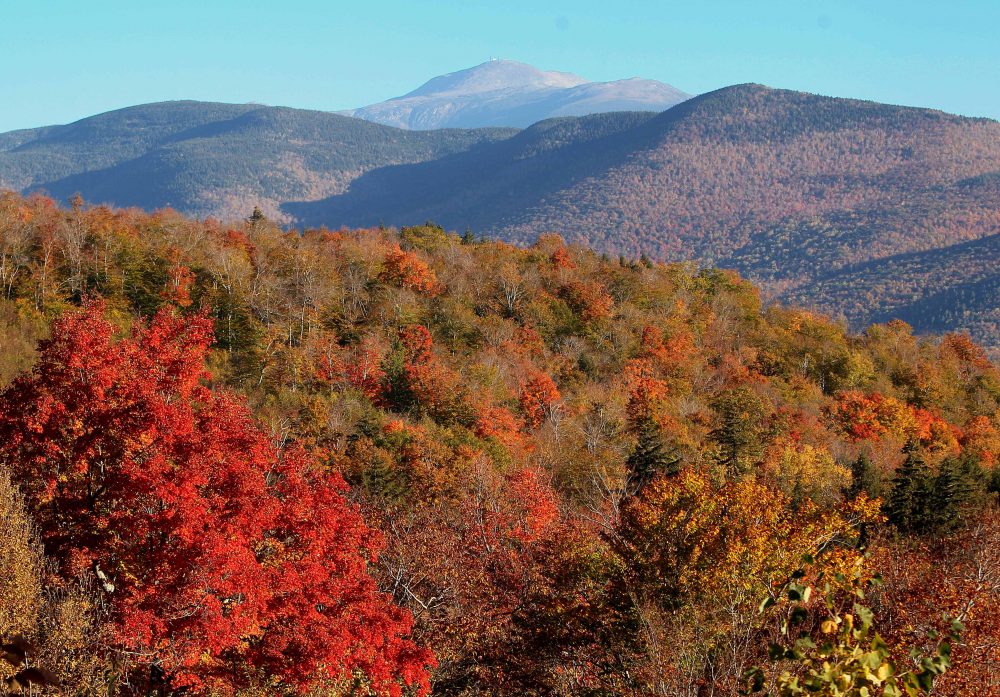Advertisement
New England Is Losing 65 Acres Of Forestland Per Day, Report Finds

New England has been losing forestland to development at a rate of 65 acres per day -- a loss that comes at a time when public funding for preservation of open land, both state and federal, has also been on the decline in all six states.
That's the conclusion of a report released Tuesday by the Harvard Forest, a research institute of Harvard University.
The study found public funding for land conservation in New England dropped by half between 2008 and 2014 to $62 million per year, slightly lower than 2004 levels.
During the same time, the pace of regional land conservation slowed from an average of 333,000 acres per year in the early 2000s to about 50,000 acres per year since 2010.
Harvard Forest Director David Foster said the study, produced with the help of a team of authors from across the region, relied on satellite imagery to determine how much land was being lost.
He said development is concentrated in southern New England and along the coastline, but there has also been development around cities like Burlington, Vermont, or even in rural areas where individual homes and roads can intersect the forest.
"The conversion of forest and farmlands to permanent structures is really changing the face of the New England landscape," he said. "One of the things that makes new England one of the most compelling places to live is the green space."
Foster said conservation and development don't need to be at odds and that nature supports people by providing clean water, clean air and encouraging tourism.
Advertisement
Jonathan Thompson, a senior ecologist for Harvard Forest, said the report shows New England is reaching a transition point. After 150 years of reclaiming forest land, all six states are again losing open space.
He said when lawmakers talk about infrastructure, they should consider forests alongside roads and bridges.
"We can see from the recent hurricanes the importance of natural infrastructure," he said.
Thompson said the loss of forestland is a bigger threat even than climate change, in part, because it more immediately threatens local ecosystems.
He pointed to success stories on the state level including Massachusetts' Community Preservation Act. More than half of Massachusetts cities and towns have adopted the effort aimed at saving open spaces, preserving historic sites, and developing affordable housing.
Despite that effort, Massachusetts has been losing forestland to development faster than any other New England state, at a rate of 7,000 acres a year -- compared with Maine (6,100 acres), New Hampshire (5,000), Connecticut (3,700), Vermont (1,500) and Rhode Island (800).
According to the report, Vermont ranks first in New England in per capita state funding for land conservation at an average of $6.70 per person annually for 2004 to 2014. That's compared to Rhode Island ($5.31), Maine ($4.77), Massachusetts ($4.55), Connecticut ($2.81) and New Hampshire ($1.46).
The state with the highest percentage of its land conserved as forest or farmland is New Hampshire, with 30 percent, followed by Massachusetts (24 percent), Vermont (23 percent), Rhode Island (20 percent), Maine (19 percent) and Connecticut (15 percent).
New England Forestry Foundation Executive Director Bob Perschel contributed to the report and said working with the 170,000 private individuals and families who own smaller parcels of forest land is critical to preserving the landscape.
"There are a lot of people who want to protect their land and ensure it's never developed even after they're gone," he said.
Advocates like Perschel and the authors of the report have called for conserving 30 million acres of forest in New England -- about 70 percent of the region's land area -- with 3 million acres kept as wild forest and the rest available for wood products and other uses, but barred from development.